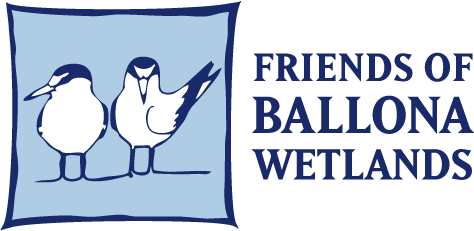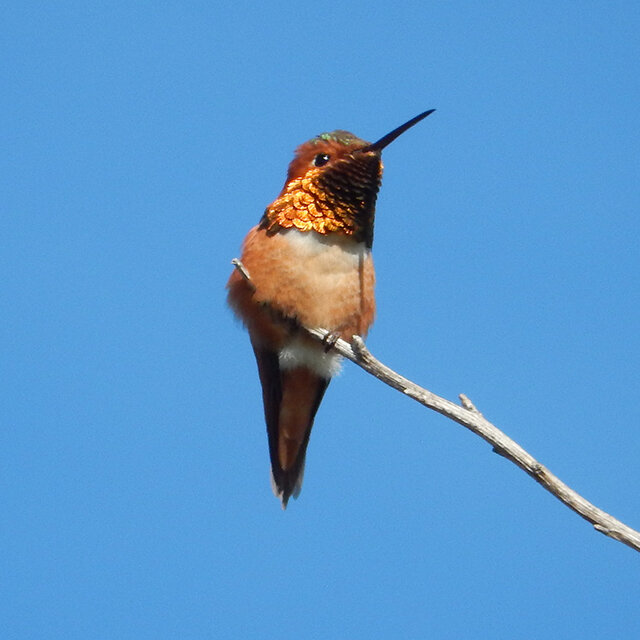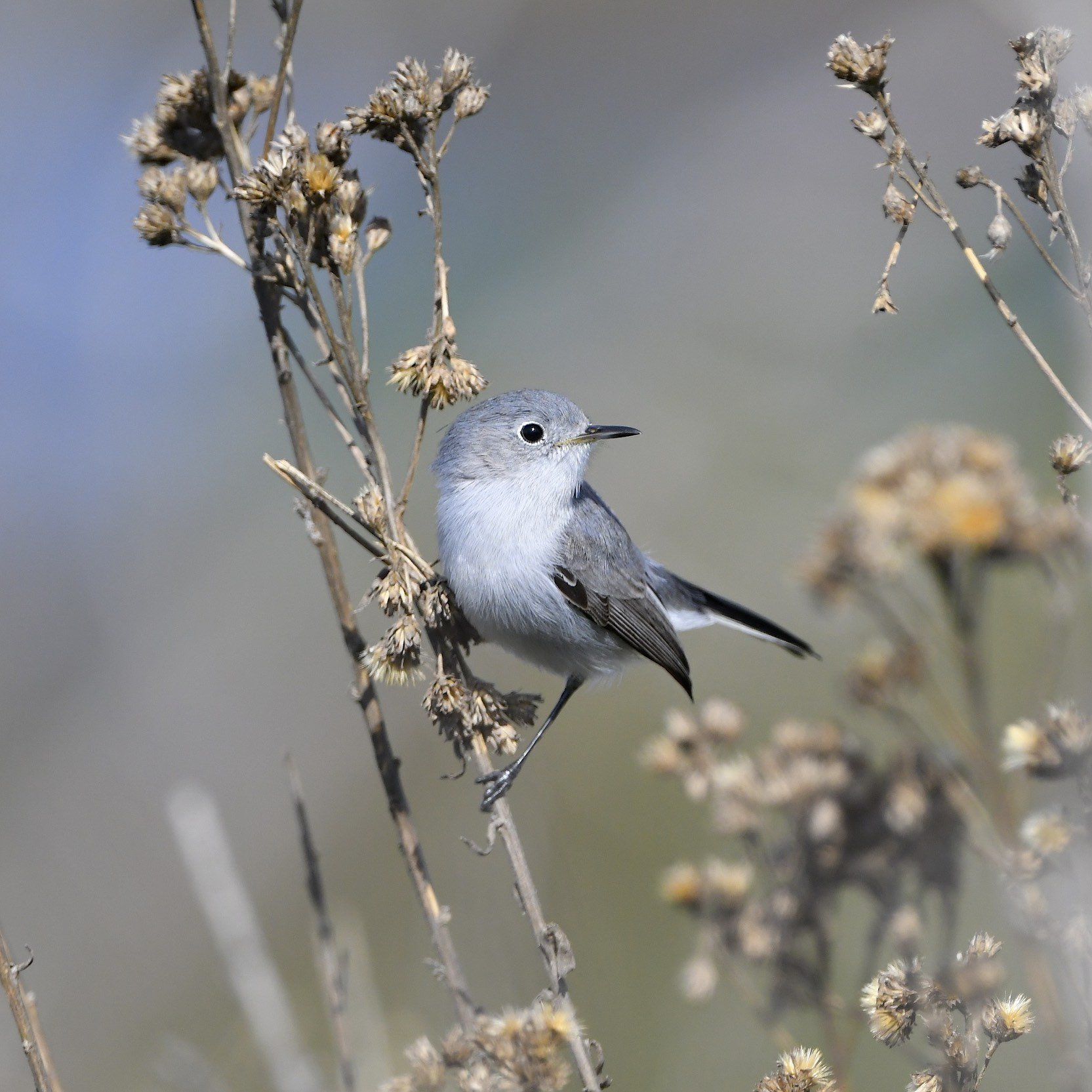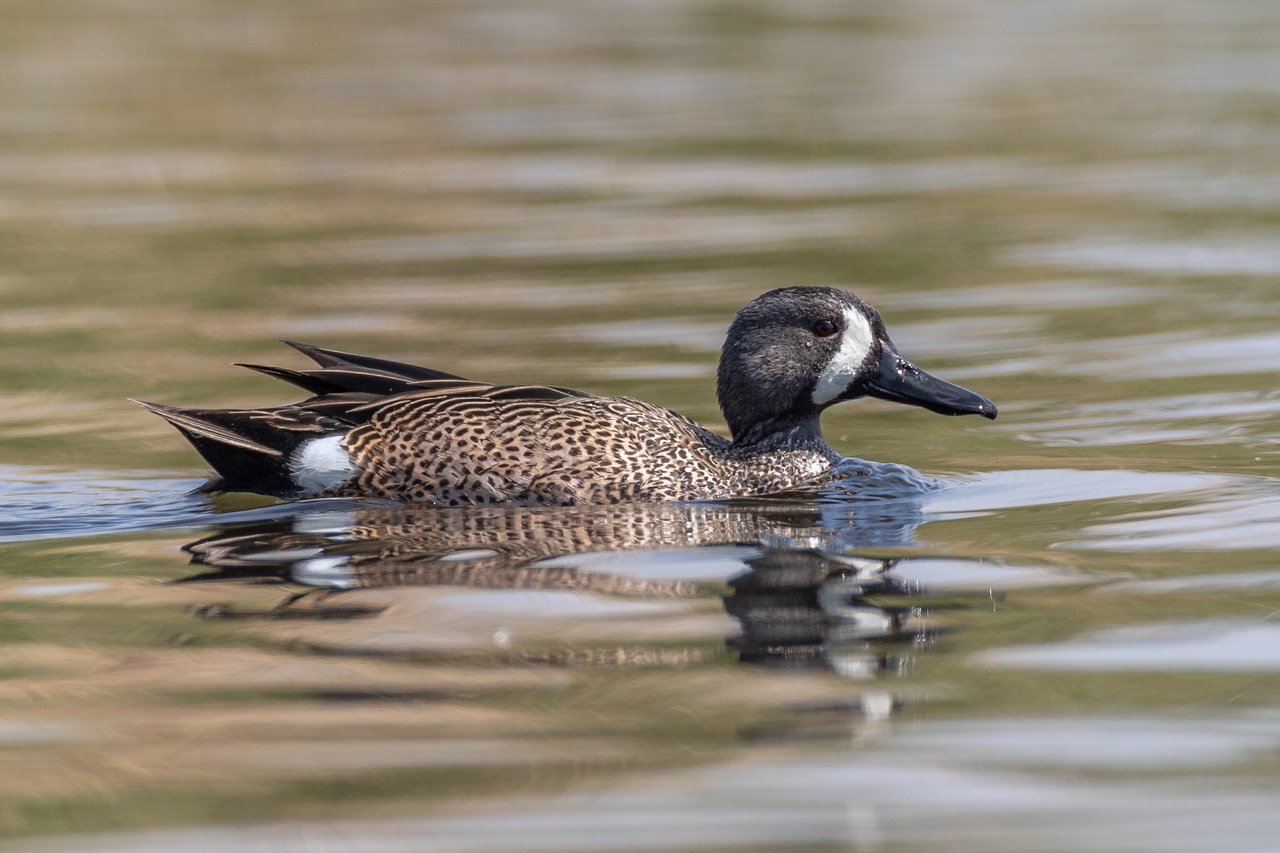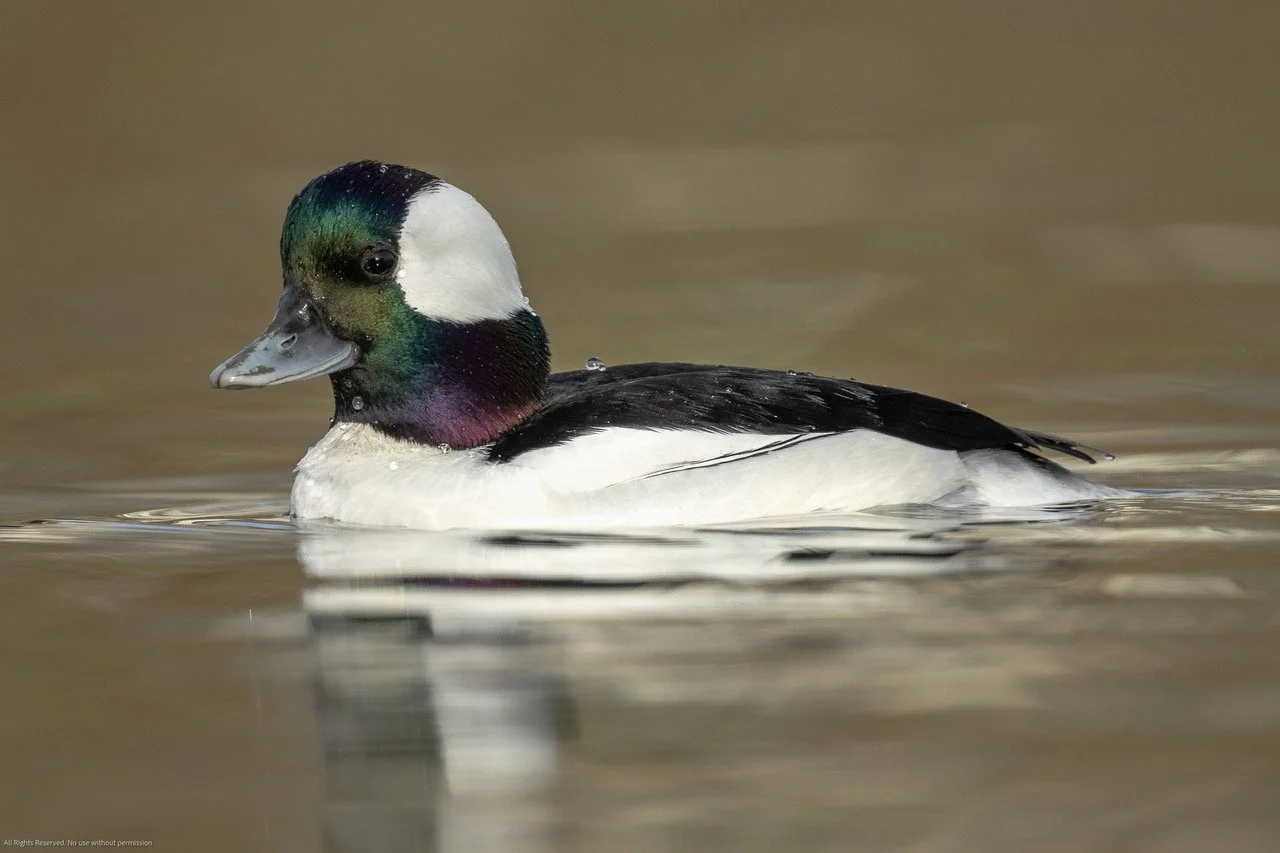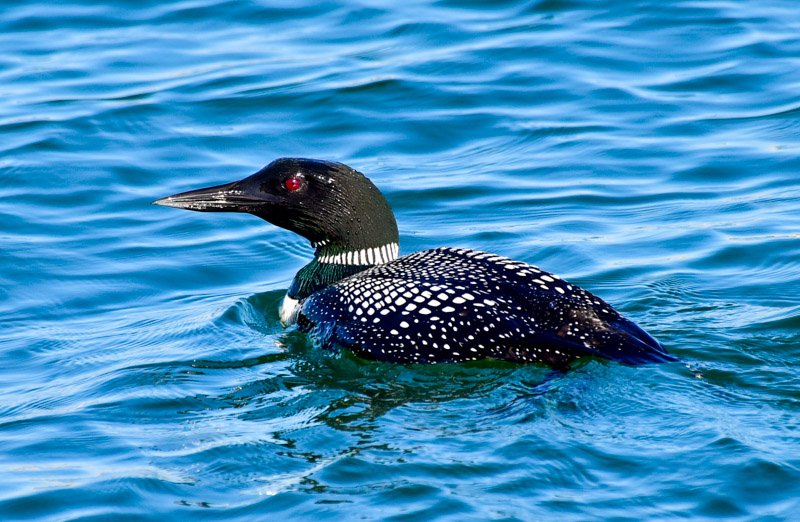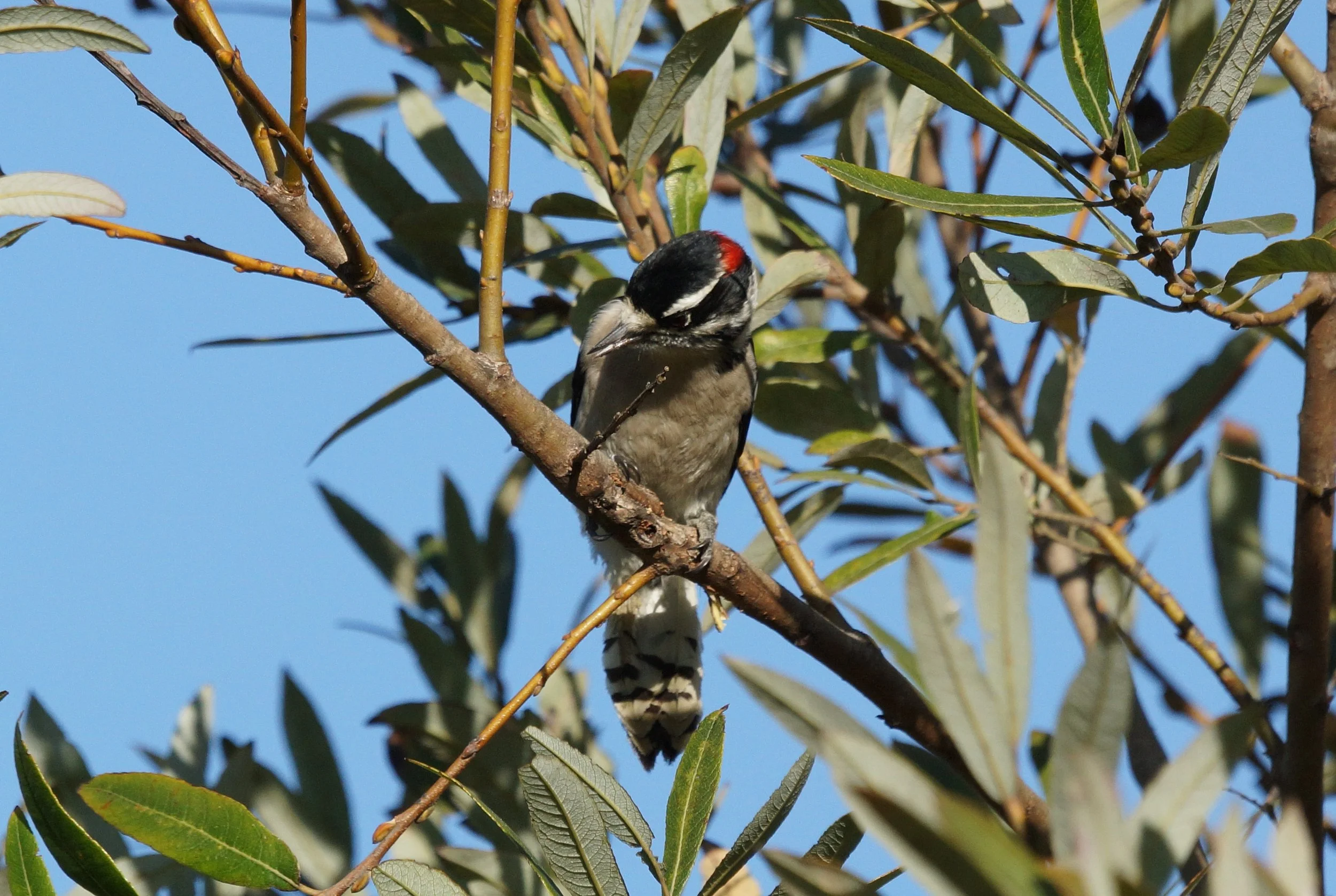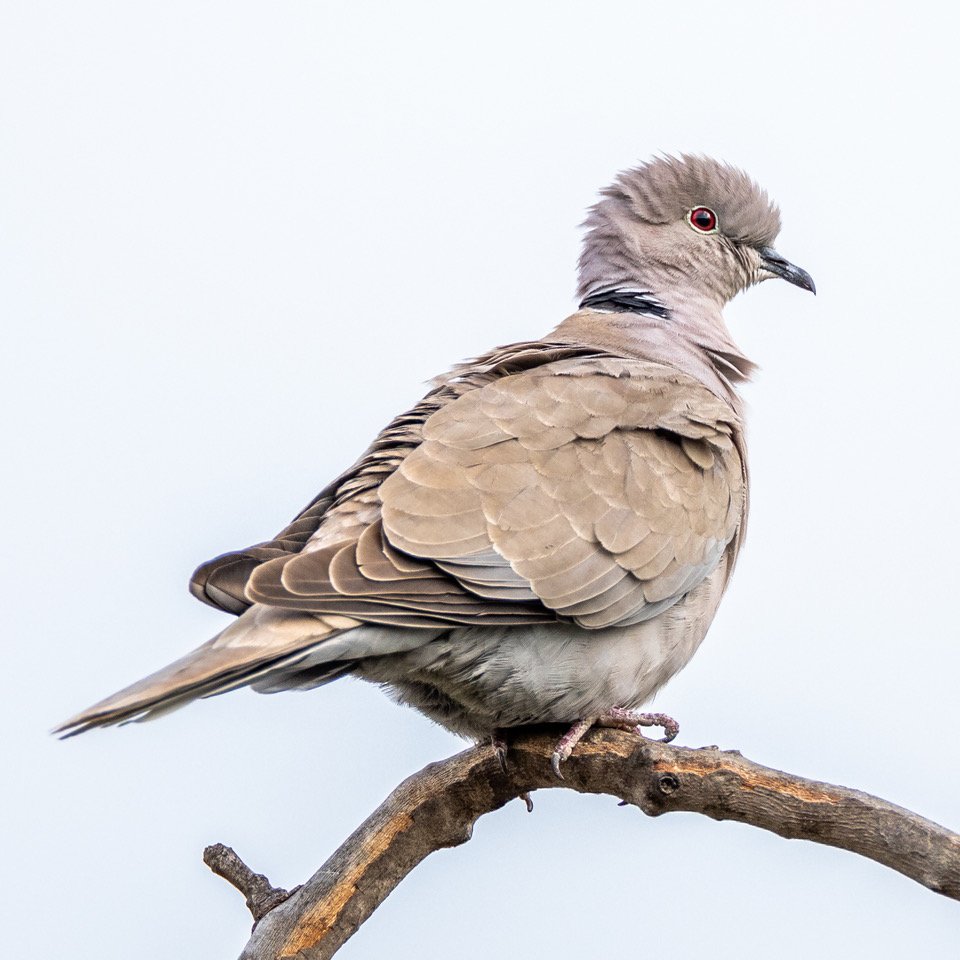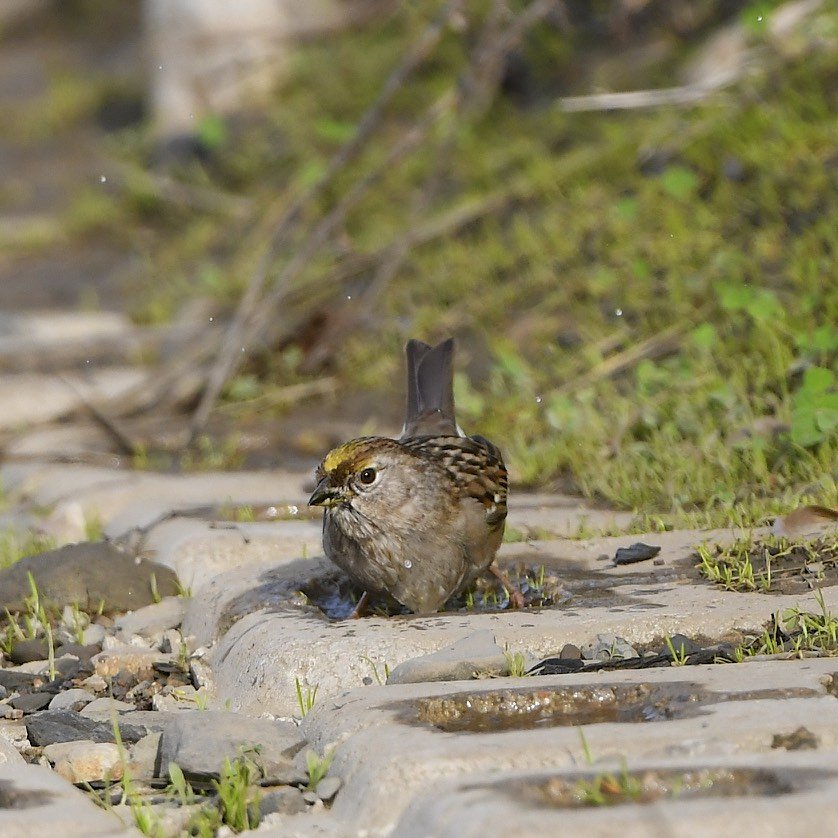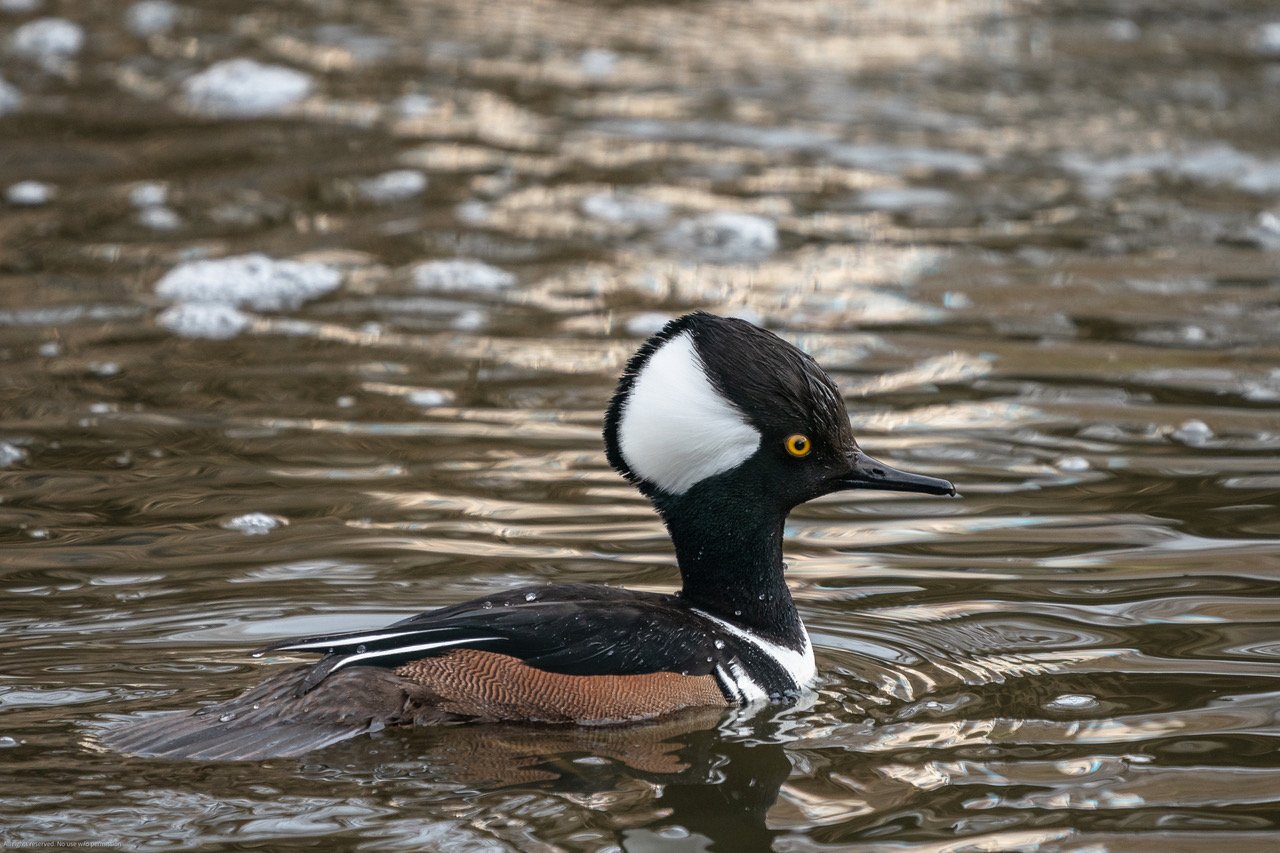BIRDS A-K
ALLEN'S HUMMINGBIRD (Selasphorus sasin)
Fun Fact: Males have 2 flight displays to attract females. 1) Side-to-side shuttle: They fly short distances side to side, gorget flared out and trilling their wings. 2) Pendulum: They swing back and forth, making a stuttering bumblebee-like sound. Then, they fly up to 100 feet into the air, dive straight down while trilling loudly with their tail, and pull sharply out of the dive.
Diet: Nectar and insects.
Habitat: Open habitats, woodlands, chaparral.
Overview: Mostly brown with green wings and a sunset colored gorget (throat patch). The females have only hints of color on their throats. Both males and females defend territories of nectar sources. This species is common throughout the Ballona Wetlands, but their populations are declining.
AMERICAN BITTERN (Botaurus lentiginosus)
Fun Fact: The yellow eyes of the American Bittern will actually turn orange during their mating season.
Diet: Insects, crustaceans, and fish
Habitat: Freshwater marshes and wetlands
Overview: The American Bittern is a stealthy hunter who’s brownish appearance makes them camouflage very efficiently into the vegetation surrounding wetlands and marshes. They come to Southern California during the winter season and can be spotted rarely at the Ballona Wetlands, and if so are more likely to be heard than seen since they are so stealthy.
Resources:
All About Birds
https://www.allaboutbirds.org/guide/American_Bittern/overview
AMERICAN COOT (Fulica americana)
Fun Fact: The American Coot has unique feet that entail extra long toes and retractable webbing that allow for improved speed under water, but also doesn’t impede while on dry land because it will fold back up.
Diet: Aquatic and terrestrial plants, rarely insects
Habitat: Freshwater wetlands, swamps, and marshes
Overview: The American Coot is a common sight across North America and can be seen wherever there are sources of freshwater. They have a distinct dark black body with bright white beak that is easy to find across a body a body of water. The American Coot is a year round resident of California and can be seen at Ballona floating about in the water, usually in groups.
Resources:
All About Birds
https://www.allaboutbirds.org/guide/American_Coot/overview
AMERICAN CROW (Corvus brachyrhynchos)
Fun Fact: American Crows sleep in large communal roosts during the winter. The amount of crows in these roosts can vary from a couple hundred to two million.
Diet: Nuts, berries, mice, earthworms, and garbage.
Habitat: Open space with food and trees.
Overview: American crows are fully-black birds with squarish tails. These birds have thick necks and produce raspy, cawing sounds. Often, they steal eggs from the nests of many other birds for food.
Resources:
All About Birds
https://www.allaboutbirds.org/guide/american_crow
Photo credit: Brad Imhoff
AMERICAN GOLDFINCH (Spinus tristis)
Fun Facts: 1) The American Goldfinch is the only bird who molts their feather twice a year. 2) They are one of the strictest vegetarians in the bird world, only swallowing an insect very rarely, and inadvertently at that.
Diet: Seeds.
Habitat: Open woodlands.
Overview: The American Goldfinch is a yellow color, though the male a brighter yellow and all around, and the female a duller yellow and on their underside only, with their back being an olive green color. The male also has a black forehead and black wings with white markings, as well as white patches near the tail. They fly in a bouncy pattern, often calling while doing so.
Resources: All About Birds
https://www.allaboutbirds.org/guide/American_Goldfinch
https://macaulaylibrary.org/asset/94300#_ga=2.20271611.293696603.1618200171-1798675430.1611105711
AMERICAN KESTREL (Falco sparverius)
Fun Fact: The American Kestrel is North America’s smallest falcon.
Diet: Insects, other invertebrates, rodents, small animals in general.
Habitat: Open woodlands, including meadows, grasslands, and deserts, and human-modified areas such as fields and parklands.
Overview: The American Kestrel has a rusty brown, spotted back. Females sport slightly reddish-brown wings, and males, pale blue wings. They have a black band near the tip of their tail and black vertical slashes on the sides of their face, sometimes referred to as “moustaches” or even “sideburns.”
Resources: All About Birds
AMERICAN ROBIN (Turdus migratorius)
Fun Fact: Eating lots of fruits and berries in the wintertime, the American Robin sometimes becomes intoxicated when eating purely honeysuckle berries.
Diet: Insects.
Habitat: Open woodlands.
Overview: The American Robin are a rather round-bodied songbird with gray-brown coloring and orange underparts, with a dark head. A white patch can be seen on their underpart during flight, as well as on their undertail. Female birds have paler heads than the male birds.
Resources: All About Birds
https://www.allaboutbirds.org/guide/American_Robin#
Photo credit: Daniel Irons
AMERICAN WHITE PELICAN (Pelecanus erythrorhynchos)
Fun Fact: The American White Pelican is skillful in stealing food from other pelicans, successful in taking large fish from other birds trying to swallow them around ⅓ of the time.
Diet: Fish.
Habitat: Lakes and ponds.
Overview: The American White Pelican is a large white waterbird with black wings that are only visible in flight. On their chest in spring sometimes is an ornamental yellow patch of feathers. Both their bills and legs are a yellow-orange color. Adult pelicans grow a horn while in breeding season near their ear. Rare at Ballona.
Resources: All About Birds
AMERICAN WIGEON (Mareca americana)
Fun Fact: Male American Wigeons are nicknamed “baldpate,” as the white line on their head makes them look bald.
Diet: Aquatic and terrestrial plants.
Habitat: Rivers, lakes, marshes, wetlands.
Overview: Male American Wigeons have a green eye patch, while the females have a smudge of black around its eye. Additionally, the male has a white bill with a dip of black at the tip, while the female has a silver bill with a dip of black at the tip. Common winter visitors at Ballona.
Resources:
All About Birds
https://www.allaboutbirds.org/guide/American_Wigeon/overview
ANNA'S HUMMINGBIRD (Calypte anna)
Fun Facts: 1) A group of hummingbirds can be referred to as a bouquet, shimmer, glittering, hover, or tune. 2) Though they cannot walk or hop, they can scoot when in the correct position to do so.
Diet: Nectar, insects (especially smaller ones), and tree sap.
Habitat: Various urban and suburban locales as well as chaparral, open woodlands, and similar biomes.
Overview: Though sizeable for its biological family (trochidae), Anna’s Hummingbird is barely larger and heavier than a green table grape. Its body is predominantly emerald and gray, but males also flaunt iridescent reddish pink feathers around their heads, and females have a red spot at the neck. Uncommon for hummingbirds, males are quite vocal while perched. The species’ remarkable courtship ceremony often entail dives of up to 130 feet.
Resources: All About Birds
https://www.allaboutbirds.org/guide/Annas_Hummingbird
Audubon
ASH-THROATED FLYCATCHER (Myiarchus cinerascens)
Fun Fact: Ash-Throated Flycatchers don’t need water. They get all the nutrients they need from the food they eat.
Diet: Insects and spiders.
Habitat: Deserts, open woodlands, and dry scrub.
Overview: Ash-Throated Flycatchers have a characteristic lemon belly and brown peaked crown. Additionally, they have long tails and cinnamon colored wings. This bird can be found nesting in crevices, including trees, fence posts, and pipes.
Resources:
All About Birds
https://www.allaboutbirds.org/guide/Ash-throated_Flycatcher
https://macaulaylibrary.org/asset/56924#_ga=2.13000180.293696603.1618200171-1798675430.1611105711
BARN OWL (Tyto alba)
Fun Fact: After swallowing their prey whole, Barn Owls later cough up pellets of partially-digested food (about twice a day). This gives scientists a great record of their consumption and insight into their diet.
Diet: Mainly small rodents (rats, mice, lemmings, etc), occasionally other mammals or birds.
Habitat: Open woodlands, grasslands, deserts, brushy fields, or other open environments (even those in urban or suburban locations).
Overview: This mostly-monogamous species is recognizable by its predominately white face and chest and dappled light brown back. Interestingly, the female, with her more red and spotted chest, is more colorful than her male counterpart. Barn Owls are nocturnal; their hunting is greatly assisted by their superb night-vision, but they also rely on sonolocating (hunting by sound), and currently outstrip all other species in this skill.
Resources: All About Birds
https://www.allaboutbirds.org/guide/Barn_Owl
Audubon
https://www.audubon.org/field-guide/bird/barn-owl
BARN SWALLOW (Hirundo rustica)
Fun Facts: 1) A male Barn Swallow may kill the nestlings of a pair in order to break them up, and allow him the opportunity to mate with the female. 2) Sometimes Barn Swallow nesting pairs get help from other Barn Swallows, usually older siblings from previous clutches, but sometimes unrelated young ones.
Diet: Insects, especially flies. They prefer to pick at one large insect than a swarm of smaller ones.
Habitat: Grasslands and a variety of open areas. Main requirements include a source of water for mud (nest construction), foraging area, and suitable nesting and perching sites.
Overview: The Barn Swallow has a long tail, almost no neck, and broad shoulders. They sport dark blue backs, wings, and tails, rusty-colored undersides, and brown foreheads and throats. They are almost constantly in flight -- catching insects midair, bathing briefly by dipping into bodies of water, and collecting nest materials.
Resources: All About Birds
https://www.allaboutbirds.org/guide/barn_swallow
https://macaulaylibrary.org/asset/165706161#_ga=2.46037479.293696603.1618200171-1798675430.1611105711
BELDING'S SAVANNAH SPARROW (Passerculus sandwichensis beldingi )
Fun Facts: Belding's Savannah Sparrows are one of the few bird species that can live exclusively in salt marshes, showcasing remarkable adaptation to high-salinity environments.
The Belding’s savannah sparrow is one of only two wetland dependent avian species that reside year-round in the coastal salt marshes of southern California.
Diet: Primarily insects, spiders, and small crustaceans. They forage on the ground, often among salt marsh vegetation.
Habitat: Salt marshes along the Pacific coast of Southern California and Baja California. These sparrows rely on dense marsh vegetation for nesting and feeding.
Overview: The Belding's Savannah Sparrow is a small songbird with a streaked brown back, yellow lores (the area between the eye and bill), and a pale, streaked breast. It is a rare subspecies of the common Savannah Sparrow, specially adapted to life in coastal wetlands. They are non-migratory, unlike other Savannah Sparrow subspecies, staying year-round in their restricted coastal habitats. Due to habitat loss, this sparrow is considered Federally and State Endangered and is a conservation focus.
Resources: All About Birds
https://www.allaboutbirds.org/guide/Savannah_Sparrow
U.S. Fish & Wildlife Service
https://www.fws.gov
BEWICK'S WREN (Thryomanes bewickii)
Fun Fact: An adolescent male Bewick’s Wren will acquire singing calls from the surrounding males, and once they do, it will never change it.
Diet: Larvae, insects, and seeds
Habitat: Bushy areas, large scrub, open field, and woodlands.
Overview: The Bewick’s Wren is a small, jumpy little bird with distinctive white eyebrows. They tend to sing very frequently and are either observed on branches or resting in the small cavities they prefer to create. Over the years their numbers have been decreasing, especially on the East coast where they are no longer found. This is thought to be directly due to the House Wren that will actively removes the Bewick’s eggs from their cavities.
Resources:
All About Birds
https://www.allaboutbirds.org/guide/Bewicks_Wren/overview
Photo credit: Darren Clark
BLACK OYSTERCATCHER (Haematopus bachmani)
Fun Fact: In order to greet friends or intimidate invaders, Black Oystercatchers run back and forth with their heads down as they make a piping sound. This is known as “Piping Display.”
Diet: Mussels and aquatic snails.
Habitat: Rocky coasts.
Overview: Black Oystercatchers have stark reddish-orange bills and yellow eyes amongst their black bodies. This Pacific Coast species can be found along the shoreline from Alaska to Baja California. Yet, their feathers become lighter South of Oregon, showing off some white and brown on their abdomens.
Resources:
All About Birds
https://www.allaboutbirds.org/guide/Black_Oystercatcher/overview
BLACK PHOEBE (Sayornis nigricans)
Fun Fact: Although it mostly eats insects, the Black Phoebe sometimes snatches minnows from the surface of ponds. It may even feed fish to nestlings.
Diet: Insects.
Habitat: Open habitats and woodlands near water sources, like streams and wetlands.
Overview: Black Phoebes are flycatchers with mostly black and grey plumage and a contrasting white belly. They will sit upright on low perches near water and make short flights to catch insects. Black Phoebes are primarily monogamous and pairs stay together for as long as 5 years.
Listen:
BLACK-BELLIED PLOVER (Pluvialis squatarola)
Fun Fact: Black Bellied Plovers are very quick to produce alarm signals in times of danger. For this reason, they protect many other shorebirds.
Diet: Insects, crustaceans, worms, and bivalves.
Habitat: Estuaries, coastal beaches, and tidal creeks.
Overview: Black-Bellied Plovers are black and white with checkered wings. They are the biggest of shorebirds, yet very agile flyers. They are common along Ballona Creek in winter sporting their winter plumage, which lacks the characteristic black belly.
Resources:
All About Birds
https://www.allaboutbirds.org/guide/Black-bellied_Plover/overview
BLACK-CROWNED NIGHT HERON (Nycticorax nycticorax)
Fun Fact: The Black-crowned Night Heron will take care of any egg in its nest, seemingly unable to differentiate between eggs of their own species and those of other ones.
Diet: Fish, also other marine animals including insects and reptiles, and sometimes miscellaneous garbage.
Habitat: Marshes.
Overview: The Black-crowned Night Heron is a small, but slightly thick, heron. Adults are light-gray with a defined black back, black crown, and solidly-black bill. Immature birds have a yellow-and-black bill, and are brown with large white spots on their back and and blurry streaks on their underside. Black-crowned Night Herons stalk their prey along the edges of the marsh. They are thought to be monogamous, and males and females both help incubate eggs and defend the nest.
Resources: All About Birds
https://www.allaboutbirds.org/guide/Black-crowned_Night-Heron
BLACK-HEADED GROSBEAK (Pheucticus melanocephalus)
Fun Fact: Female Black-headed Grosbeaks sing shortened versions of the male birds songs, although they sometimes may sing full-length versions to trick their mate about the presence of predators, making him stay at the nest longer.
Diet: Insects.
Habitat: Forests.
Overview: The Black-headed Grosbeak are large songbirds with a large bill and a short tail. They all have grayish bills, and bright yellow underwings, although male birds are an orange-cinnamon with black heads and black and white wings, whereas female and immature birds have a more orange above with buff and some streaking on their breast. Occasionally seen in riparian habitat at Ballona during migration.
Resources: All About Birds
https://www.allaboutbirds.org/guide/Black-headed_Grosbeak
https://macaulaylibrary.org/asset/111069#_ga=2.213301719.293696603.1618200171-1798675430.1611105711
BLACK-NECKED STILT (Himantopus mexicanus)
Fun Fact: The Black-necked Stilt is the runner up behind flamingoes for the longest legs to body size ratio of any bird.
Diet: Aquatic invertebrates, crustaceans, and insect larvae
Habitat: Wetlands, lagoons, swamps, and shallow waters
Overview: The Black-necked Stilt is a probing bird with long pink legs and bright white and black body that is common in North and South America. They can be spotted at Ballona Wetlands in shallow water looking for prey and during the nesting season have a loud call that is easily detectable.
Resources:
All About Birds
https://www.allaboutbirds.org/guide/Black-necked_Stilt/overview
BLACK-THROATED GREY WARBLER (Setophaga nigrescens)
Fun Fact: The Black-throated Gray Warbler sometimes gets lose in its short migration from the Western US down to Mexico, ending up in Eastern states.
Diet: Insects.
Habitat: Forests.
Overview: They have a very white underside, and a gray, black, and white top, with a black-and-white striped face with a yellow spot above and in front of their eyes, and black streaks on their sides. Female birds are somewhat paler and often have a patchy black throat.
Resources: All About Birds
https://www.allaboutbirds.org/guide/Black-throated_Gray_Warbler
https://macaulaylibrary.org/asset/50127#_ga=2.217037013.293696603.1618200171-1798675430.1611105711
BLUE GROSBEAK (Passerina caerulea)
Fun Fact: The Blue Grosbeak has expanded northward in the US, taking advantage of deforestation.
Diet: Insects.
Habitat: Open woodlands.
Overview: Both sexes of birds have two wingbars, the top chestnut, and the lower grayish. Adult male birds are a deep blue color with a black mask in front of their eyes, and a beak with black at the base, and gray extending farther down. Female birds are a cinnamon-brown color, richer on the head and less so on their underparts, with bluish tails. Immature birds are a deep chestnut brown with chestnut wingbars.
Resources: All About Birds
https://www.allaboutbirds.org/guide/Blue_Grosbeak
https://macaulaylibrary.org/asset/79446#_ga=2.53878251.293696603.1618200171-1798675430.1611105711
BLUE-GREY GNATCATCHER (Polioptila caerulea)
Fun Fact: The Blue-gray Gnatcatcher takes up fragments of other birds’ songs in a high pitched, nasal tone, giving them the nickname “little mockingbird.”
Diet: Insects, other invertebrates. Smaller prey are eaten whole, while larger prey often have their wings ripped off before consumption.
Habitat: Forests, especially moist habitats and forest edges.
Overview: The Blue-gray gnatcatcher is a slim songbird with a long tail and legs, and a thin, straight bill. As their name suggests, they are blue-gray on top, and sport a white-gray underside, which extends to their tail. Males have a black “v” on their foreheads above their eyes.
Resources: All About Birds
BLUE-WINGED TEAL (Spatula discors)
Fun Fact: You might have heard of the partygoer who is the last to arrive and the first to leave -- this is very much the case for the Blue-winged Teal in North America. One of the last ducks to migrate northward in the spring, it is also one of the first to head south in fall.
Diet: This omnivorous teal eats insects and crustaceans as well as vegetation and grains.
Habitat: Marshes, ponds, wetlands, even swampy rice fields.
Overview: Male Blue-winged Teals are brown-bodied with dark blue heads, and reveal a blue patch on their upperwing coverts while in flight, while females are patterned brown. They can be found on edges of ponds with other species of dabbling ducks across North America. Forced copulations by males with females other than their mate is very rare compared to other duck species.
Resources: All About Birds
BONAPARTE'S GULL (Chroicocephalus philadelphia)
Fun Fact: The Bonaparte’s Gull is the only species of gull who nests regularly in trees.
Diet: Aquatic invertebrates.
Habitat: Lakes and ponds.
Overview: They are a small gull, with a slender, black bill. Breeding adults having black heads, red legs, and large white triangles in their wingtips, with gray wings. Nonbreeding birds have gray upperwings, a gray spot on their cheek, and are primarily white elsewhere. Immature birds are similar to nonbreeding, though they have a tail that is tipped with black.
Resources: All About Birds
BROWN PELICAN (Pelecanus occidentalis)
Fun Fact: The Brown Pelican incubates its eggs with the skin of its feet by standing on top of them. This practice pushed the species to the brink of extinction in the mid 1900s, when pesticide concentrations resulted in thinner eggshells that cracked under the birds’ weight. Since this population crash, the pelicans have rebounded to stable and healthy levels thanks to stricter chemical regulations.
Diet: Mostly small fish that swim in schools near the water’s surface.
Habitat: Ocean areas, including estuaries, islands, and mangroves.
Overview: The Brown Pelican is a huge gray-brown bird with a yellow head and white neck, a long bill, and a stretchy throat pouch for catching food. When it comes time for breeding, the sides and backs of their necks turns a rich, dark reddish brown color. Brown Pelicans can be spotted plunging from impressive heights into the water to scoop up their stunned prey. Common along Ballona Creek.
Resources: All About Birds
BROWN-HEADED COWBIRD (Molothrus ater)
Fun Fact: Instead of building their own nests, Brown-headed Cowbirds pour all their energy into egg production and lay their eggs in nests of other bird species (“brood parasitism”). Sometimes, baby cowbirds roll the other non-cowbird eggs out of the nest. Many birds do not recognize the difference, and raise the cowbirds as their own, while others puncture and discard of them. The Yellow Warbler recognizes the difference but is too small to remove the cowbird eggs, and instead, builds a nest atop the eggs, hoping the cowbirds do not try again.
Diet: Seeds, along with insects stirred into movement by horses and cattle.
Habitat: Grasslands, avoid forests (deforestation in Eastern US has allowed these pests to expand their range).
Overview: The Brown-headed Cowbird is a small blackbird, with a thicker, smaller bill than that of other blackbirds, as well as a short tail. Both female and male birds, as their name suggests, have brown heads, though the female has brown coloring with streaking on her stomach as well. In winter, they roost in enormous groups. Their name derives from their close association with cattle, who make insects available for them.
Resources: All About Birds
https://www.allaboutbirds.org/guide/Brown-headed_Cowbird
Photo credit: Brad Imhoff
BUFFLEHEAD (Bucephala albeola)
Fun Fact: Unlike other ducks, the bufflehead is monogamous and sticks with the same mate for years
Diet: Aquatic invertebrates, crustaceans, mollusks.
Habitat: Lakes and ponds, mostly in the woods of Canada and Alaska, but sometimes in the northern US.
Overview: This tiny and endearing breed of duck flaunts a white body, a dark head with a white patch, and a black back. It delves underwater to locate food, which it often swallows before emerging. Buffleheads are rarely seen on dry land outside necessary emergences to tend their nests, which they carve out in the abandoned woodpecker holes of Northern Flickers.
Resources: All About Birds
https://www.allaboutbirds.org/guide/Bufflehead
https://macaulaylibrary.org/asset/138213#_ga=2.217402454.116234397.1614395346-1798675430.1611105711
BURROWING OWL (Athene cunicularia)
Fun Fact: Burrowing Owls cover the entrance to their homes in animal dung before laying eggs. This attracts insects which they can trap and eat.
Diet: Rodents and insects.
Habitat: Underground burrows.
Overview: Burrowing owls are sandy colored, yellow-eyed birds with long legs. They stay low to the ground in order to hunt and take over the burrows made by prairie dogs and squirrels for living purposes. Winters rarely at Ballona.
Resources:
All About Birds
BUSHTIT (Psaltriparus minimus)
Fun Facts: 1) A breeding Bushtit pair will often have adult male helpers at the nest to assist in raising their young. 2) The Bushtit is the only one in their family in America; the other seven are found in Eurasia.
Diet: Small insects and occasionally plant material.
Habitat: Scrub, suburbs, open areas.
Overview: The Bushtit is a tiny bird with a large head, a stubby bill, and a long tail. They have brown-gray heads, gray wings, and a tan-gray underside. They can be found at a wide range of elevations, and are constantly moving around in their lively flocks, foraging upside down, sometimes gathering materials for their distinctive hanging nests.
Resources: All About Birds
https://www.allaboutbirds.org/guide/Bushtit
https://macaulaylibrary.org/asset/272370221#_ga=2.251026757.293696603.1618200171-1798675430.1611105711
CALIFORNIA GULL (Larus californicus)
Fun Fact: In 1848, members of this species rescued the crops of some Mormon settlers near Salt Lake City from total destruction by consuming the bothersome katydids that devoured them. For this, the California Gull was ironically picked to be the state bird of Utah!
Diet: Pretty much anything, including insects, other marine life, garbage, cherries, grains, and much more.
Habitat: Lakes and ponds, marshes, coastal regions, and inland centers.
Overview: A medium-sized coastal bird, the California Gull sports a white head and chest, grey wings, and black tailfeathers. It can be found inland as far as the Dakotas at certain times of year, eating everything from mayflies to garbage. The California Gull is a social bird which breeds in colonies, and mingles with other gull species while spending the winter along the west coast.
Resources: All About Birds
https://www.allaboutbirds.org/guide/California_Gull/
Audubon
https://www.audubon.org/field-guide/bird/california-gull
Photo credit: Blake Matheson
CALIFORNIA LEAST TERN (Sternula antillarum)
Fun Fact: This is the species of bird in the FBW logo! They have a nesting colony on Venice Beach, right next to Ballona Creek. In summer, they can be seen foraging along the creek and even at Ballona Freshwater Marsh.
Diet: Mostly fish and invertebrates.
Habitat: Shoreline locations such as beaches or lagoons.
Overview: The Least Tern sports a black-and-white forehead, a light grey body, and a yellow bill and legs, and holds rank as the smallest of American terns. The species breeds on beaches or near other bodies of water. It has been listed as endangered since 1985 due to a lack of nesting habitat.
Resources:
CALIFORNIA SCRUB JAY (Aphelocoma californica)
Fun Fact: The California Scrub-Jay likes to eat ticks and other insects off of the back of a mule deer.
Diet: Insects, fruit, nuts, and small animals such as lizards.
Habitat: Scrub, oak, woodlands, and suburban yards
Overview: The California Scrub-Jay, hence the name, is a common year-round resident to California and is known for its deep blue coloring. They can be spotted at Ballona and other parts of Los Angeles quite regularly usually at low elevations. Just recently were they officially distinguished as being different from the Woodhouse’s Scrub-Jay and this is mainly since the Californa Scrub-Jay has a deeper blue color and wider/less pointed beak.
Resources:
All About Birds
https://www.allaboutbirds.org/guide/California_Scrub-Jay
Photo credit: Drew Beamer
CALIFORNIA THRASHER (Toxostoma redivivum)
Fun Fact: The California Thrasher, the largest of the Thrashers, often incorporates other birds’ songs into its own.
Diet: Insects, which it plucks from ground foliage with its long, dramatically curved beak.
Habitat: Scrub, specifically the California chapparal.
Overview: The California Thrasher is a ground-foraging bird with a long tail and legs, and a distinct curved bill. They are a brown or grayish brown color, with a pale throat and a rusty patch under the tail. They are also known for their limited range (parts of California and Baja California), and tendency to sing male-female duets. Rare at Ballona.
Resources: All About Birds
CALIFORNIA TOWHEE (Melozone crissalis)
Fun Fact: Many California Towhees construct their homes out of poison oak and eat the white berries which the plant produces.
Diet: Seeds, insects, and berries.
Habitat: Chaparral, dry habitats.
Overview: California Towhees are grayish-brown birds with long tails. It’s common to hear them in the backyard as they repetitively knock at windows to wrestle with their reflection. These birds are found in both California and Oregon.
Resources:
All About Birds
https://www.allaboutbirds.org/guide/California_Towhee/overview
CANADA GOOSE (Branta canadensis)
Fun Fact: There are eleven subspecies of Canada Goose. However, the smallest four are now considered a different species: The Cackling Goose.
Diet: Eelgrass, berries, seeds, and skunk cabbage.
Habitat: Parks and fields.
Overview: The Canada Goose has a brown body, a large black neck, and a white chin-strap. During flight, these birds reveal an eye-catching white “U” on the back of their black tail. This is the only goose that breeds at Ballona, they nest at the Freshwater Marsh.
Resources:
All About Birds
CASPIAN TERN (Hydroprogne caspia)
Fun Facts: Young Caspian Terns have trouble catching fish, and instead rely on their parents for long periods of time.
Diet: Fish.
Habitat: Shorelines.
Overview: The Caspian Tern is the largest of its kind, sporting a white body, a black cap, and a long orange bill. It breeds in colonies near along shorelines and on river or lake islands. The tern can be seen plunging from the sky into the water to catch its prey.
Resources: All About Birds
CASSIN'S KINGBIRD (Tyrannus vociferans)
Fun Fact: Cassin’s Kingbirds prefer to sing at night, tending to begin around 3:00 AM.
Diet: Primarily insects (especially caterpillars) and occasionally fruit.
Habitat: Areas that offer both tall trees for nesting and open spaces for flycatching, which include various types of forests, agricultural areas, and grasslands. Cassin’s Kingbirds sometimes use telephone poles and other human-built structures as perches when traversing more populated regions.
Overview: The Cassin’s Kingbird is an assertive bird that sports a grey head, brown wings, a yellow breast, and a white throat. It hunts visually, often occupying a high perch and snapping up flying insects midair. When directly threatened, this bold species has been known to attack even large hawks. Common at Ballona.
Resources:
https://www.allaboutbirds.org/guide/Cassins_Kingbird/overview
CEDAR WAXWING (Bombycilla cedrorum)
Fun Fact: The cedar "waxwing" gets its name from the waxy tips on some wing feathers, but humans still don't know what they are used for.
Diet: Mainly fruit, sometimes insects in the summer
Habitat: Forests, mixed woodlands, especially along streams
Overview: Cedar Waxwing feathers have a silky smooth appearance, are very social, and are often found in large groups. They are found in trees, usually picking berries from twigs. During courtship, males and females may pass a berry back and forth between them, until eventually one of them eats it, usually the female.
Resources:
All About Birds
CINNAMON TEAL (Spatula cyanoptera)
Fun Fact: Unlike other ducks, the Cinnamon Teal has two separate breeding populations in North and South America
Diet: These omnivorous dabbling ducks rapidly open and close their mouths to collect mostly seeds, vegetation, and insects.
Habitat: Marshes, well-vegetated wetlands.
Overview: All Cinnamon Teal adults have a blue patch in open wing, although the mature male has a red eye and rusty plumage, with a brownish back and white underwing, while the immature female is mostly brown. This beautiful bird is a favorite of waterfowl enthusiasts, some of whom even keep them as pets.
Resources: All About Birds
https://www.allaboutbirds.org/guide/cinnamon_teal
https://macaulaylibrary.org/asset/188179171#_ga=2.3485552.116234397.1614395346-1798675430.1611105711
CLIFF SWALLOW (Petrochelidon pyrrhonota)
Fun Facts: 1) The Cliff Swallow is almost always seen in large groups, whether it is chasing insects or bathing in a river. 2) Sometimes Cliff Swallows within a colony lay eggs in each other’s nests, or carry eggs from their own nests into a fellow bird’s
Diet: Various flying insects.
Habitat: Lakes and ponds, grasslands, river edges. Colony sites must be close to water, open areas for foraging, and a source of mud for nest construction.
Overview: The Cliff Swallow has a metallic, deep-blue back, pale orange-colored rumps, and a deep-rust colored head with a white forehead patch. Those from Mexico have dark chestnut-colored foreheads, and immature birds may have whitish throats during part of the year. They build their nests out of mud and on bridges or overpasses near water, and are spotted fairly frequently even by non-birders.
Resources: All About Birds
https://www.allaboutbirds.org/guide/cliff_swallow
https://macaulaylibrary.org/asset/92053871#_ga=2.46037479.293696603.1618200171-1798675430.1611105711
Photo credit: Bryan Calk
COMMON LOON (Gavia immer)
Fun Fact: The Common Loon can execute a full 180 degree turn in a fraction of a second by using one foot to brake and the other to push in the opposite direction.
Diet: Almost all fish, and if not available small crustaceans.
Habitat: Lakes, bays, ocean coasts, marshes, and estuaries.
Overview: The Common Loon is a snob when it comes to water purity, and mainly reside in freshwater lakes in the Northern woods, however can sometimes be spotted at Ballona. If a breeding adult, they have a primarily black body with bright red eyes that is hard to miss and quite the sight.
Listen:
COMMON RAVEN (Corvus corax)
Fun Facts: 1) The Common Raven is a very smart bird, and can mimic noises of other birds and even humans (a famous example is the one raised from birth to declare “Nevermore!”). 2) Young Ravens enjoy dropping sticks from high branches and flying down to catch them midair, as a sort of game.
Diet: Omnivorous -- will eat about anything, from human food, to dog food, to miscellaneous small animals.
Habitat: Forests (excluding eastern ones), and various habitats across the continental US. They do well near most human habitations, but as for big cities, they are only found in a few (Los Angeles is an example).
Overview: The Common Raven is entirely black, with a thick neck, shaggy throat feathers, and a sharp beak. They aren’t social birds, and are usually seen alone.
Resources: All About Birds
COMMON YELLOWTHROAT (Geothlypis trichas)
Fun Fact: The Common Yellowthroat was one of the first types of bird species to ever be documented.
Diet: Insects, spiders, and fruit
Habitat: Wetlands, prairies, and forests
Overview: The Common Yellowthroat is very common to wet areas with low vegetation such as Ballona Wetlands, however they have one of the widest ranges of habitats and can be found all across North America. The females tend to create large nests near marshy or wet areas where they will raise their young, and sometimes will even build nests on plants that are on the surface of the water.
Resources:
All About Birds
https://www.allaboutbirds.org/guide/Common_Yellowthroat
https://macaulaylibrary.org/asset/210613#_ga=2.251682122.293696603.1618200171-1798675430.1611105711
COOPER'S HAWK (Accipiter cooperii)
Fun Fact: While it was thought that a Cooper’s Hawk was opposed to towns and cities, data shows that they are more commonly found in these areas than their natural habitat, forests.
Diet: Medium-sized birds.
Habitat: Forests, woodlands, leafy suburbs.
Overview: Long tail and upright posture. Reddish underparts, blue-gray upperparts, and a black banded tail. This bird uses the flap-flap-glide pattern to attack its prey at high speeds.
Resources:
All About Birds
https://www.allaboutbirds.org/guide/Coopers_Hawk/
https://macaulaylibrary.org/asset/167826#_ga=2.116679494.116234397.1614395346-1798675430.1611105711
DARK-EYED JUNCO (Junco hyemalis)
Fun Fact: The Dark-eyed Juncos are usually year round residents meaning that they stay during the snowy months and perch high in the trees.
Diet: Seeds
Habitat: Coniferous and deciduous forests
Overview: The Dark-eyed Junco is one of the more unique bird species in the sense that they tend to tolerate the winter seasons and will stay year round in their habitats. Since they do stay during the winter months, the females will create an extra strong nest high in the trees that involves weaving of materials and will line the nests with excess seeds and mosses for added food and warmth.
Resources:
All About Birds
https://www.allaboutbirds.org/guide/Dark-eyed_Junco
https://macaulaylibrary.org/asset/94361#_ga=2.247370951.293696603.1618200171-1798675430.1611105711
DOUBLE-CRESTED CORMORANT (Phalacrocorax auritus)
Fun Fact: While the wings of most birds are oily to detract water, the Double-crested Cormorant’s are not -- instead, the bird must dry itself in the sun.
Diet: A very wide variety of fish, which it catches by diving underwater and chasing.
Habitat: Lakes and ponds with good perching sites nearby.
Overview: The Double-crested Cormorant has a long, kinked neck and a long, hooked bill, about the length of its face. Adult birds are mostly black, with an orange piece of skin on the face, while immature birds are more brownish. This bird spends most of its time fishing or resting.
Resources: All About Birds
https://www.allaboutbirds.org/guide/Double-crested_Cormorant
DOWNY WOODPECKER (Dryobates pubescens)
Fun Fact: The Downy Woodpecker doesn’t communicate through singing, but makes drumming sounds on hard surfaces instead to do so.
Diet: Insects, sometimes plant material
Habitat: Woodlands, forests, and near streams
Overview: The Downy Woodpecker is a frequent year-round resident of California, ranging from the forests to the suburban bird feeders, and commonly seen at Ballona wetlands. This black and white bird is commonly found on little branches, and the males have a distinctive red spot on their nape. They are the most common woodpecker to be found at a birdfeeder, so put one in your backyard and wait till they come.
Resources:
All About Birds
https://www.allaboutbirds.org/guide/Downy_Woodpecker/overview
EARED GREBE (Podiceps nigricollis)
Fun Fact: Almost the entire population of the Eared Grebe flies to Mono Lake, CA or Great Salt Lake, UT, in the fall, to eat brine shrimp before their journey south. They more double than their weight at these lakes, leaving them flightless until the process is reversed. Their flightless period is the longest out of any flying bird.
Diet: Aquatic invertebrates, primarily brine shrimp and brine flies.
Habitat: Saltwater lakes and ponds which often lack fish.
Overview: The Eared Grebe has a small head, with a thin neck and bill, and can be spotted in salty bodies of water diving under the surface for food. Breeding birds are mostly black with chestnut flanks, with a crested head and yellow plumes coming out from behind bright red eyes. Nonbreeding birds are an overall grayish black, with gray cheeks and a white neck, and a dark crown that extends past the eye.
Resources: All About Birds
https://www.allaboutbirds.org/guide/eared_grebe
https://macaulaylibrary.org/asset/146042801#_ga=2.3443952.116234397.1614395346-1798675430.1611105711
EURASIAN COLLARED-DOVE (Streptopelia decaocto)
Fun Fact: The Eurasian Collared-Dove feed their new-born chicks a “crop milk” that is derived from cells that are removed from the layers of crops. About a week later, the chicks are fed seeds or fruit.
Diet: Mostly seeds and cereal grains, sometimes fruits and occasionally invertebrates.
Habitat: The Eurasian Collared-Dove can be found in North America in urban and suburban areas.
Overview: A light-brown bird with patches of white near the end of its tail, the Eurasian Collared-Dove travels in flocks with other doves in residential or developed areas. Although they are mainly found in North America, they were first introduced in the Bahamas, and released in a pet-shop burglary. Within about fifteen years, they managed to colonize much of the continent.
Resources:
https://www.allaboutbirds.org/guide/Eurasian_Collared-Dove/overview
FOX SPARROW (Passerella iliaca)
Fun Fact: Although the Fox Sparrow’s true range lies in North America, individuals have been spotted in various European countries, including Germany and Italy. They make this journey by resting on boats along the way.
Diet: Insects and other invertebrates, along with seeds, fruits, and buds. They forage by performing a common “double-scratch” maneuver, which involves hopping forward before immediately hopping back while scratching both feet backwards through the leaf litter.
Habitat: A variety of forests. Regional differences determine preferences -- for example, “Red” Fox Sparrows like scrubby forest edges, while “Sooty” Fox Sparrows opt for deciduous riparian thickets. Meanwhile, Large-Billed Fox Sparrows prefer brushy fields at high elevations.
Overview: The Fox Sparrow is a round bodied sparrow with a rust-brown back, a gray and rust-colored head, and whitish underside with brown splotches. Their bills vary in color from yellow to dark gray. They are often seen rummaging around in leaf litter for food, and usually spend time alone or in small groups, sometimes associating with other similar bird species.
Resources: All About Birds
https://www.allaboutbirds.org/guide/fox_sparrow
https://macaulaylibrary.org/asset/136175#_ga=2.50829802.293696603.1618200171-1798675430.1611105711
GADWALL (Mareca strepera)
Fun Fact: While producing their clutches, female gadwalls produce an egg a day. To keep up with their protein demands, they must eat more invertebrates and rely on nutrient reserves built up during winter.
Diet: Mostly aquatic plants, some invertebrates and insects.
Habitat: Marshes.
Overview: Gadwalls are about the same size as Mallards, with a white wing patch that is sometimes visible. Female birds have an orange edge on their bills, and are patterned with brown shades. Male birds are gray-brown, with a black tail patch, and fully orange bill. Gadwalls are dabbling ducks who sometimes steal food from neighboring birds, like American Coots.
Resources: All About Birds
https://www.allaboutbirds.org/guide/Gadwall
GOLDERN-CROWNED SPARROW (Zonotrichia atricapilla)
Fun Fact: The Golden-crowned sparrow has very little known information about them.
Diet: Insects, seeds, plant matter, worms, spiders, and fruits
Habitat: Tundra, mountains, and riparian thickets
Overview: The Golden-crowned Sparrow is known to be in the upper Northern regions and tends to be in shrubby lowlands, hence why they are more tricky to study. During the summer they will reach the uppermost points of British Columbia and Alaska where they will breed for many months, however during the nonbreeding season they can be spotted along the coasts of California.
Resources:
All About Birds
https://www.allaboutbirds.org/guide/Golden-crowned_Sparrow
https://macaulaylibrary.org/asset/136493#_ga=2.213168471.293696603.1618200171-1798675430.1611105711
GREAT BLUE HERON (Ardea herodias)
Fun Fact: Their wingspan can be up to 6.5 feet wide, and yet they only weigh 5-6 lbs because of their hollow bone structure.
Diet: Almost anything! Including fish, small mammals, insects, reptiles, and birds.
Habitat: Fresh and salt marshes, grasslands, agricultural fields, riverbanks, lakes, and ponds.
Overview: This is the largest bird in the Ballona Wetlands and they usually forage alone in the channels, along the marsh shorelines, and in the vegetation throughout the area. They strike their prey with their large beak.
GREAT EGRET (Ardea alba)
Fun Fact: During breeding season, the patch of skin on the bird’s face turns bright neon green.
Diet: Mostly fish, but will also eat invertebrates, small mammals, reptiles, and birds.
Habitat: Fresh, salt, and brackish marshes.
Overview: Great egrets are a little smaller than Great Blue Herons, with pure white feathers, black legs and a yellow-orange bill. They wade through shallow water to hunt for food.
GREAT HORNED OWL (Bubo virginianus)
Fun Fact: The Great Horned Owl uses its incredibly strong talons to kill prey by breaking its spine.
Diet: Includes small mammals, reptiles, insects, fish and invertebrates (everything from scorpions to types of geese!).
Habitat: Forests of varying stages and other open habitats such as wetlands and fields. Also have been spotted in some suburban or even city environments.
Overview: With pupils and retinas that adapt to the dark for night vision, Great Horned Owls are most active from dusk to dawn (only during the winter do they even hunt at all during the daytime). Their soft feathers protect them against harsh winters and enable quiet flight, while facial disc feathers help direct sound waves to their ears, sharpening hearing abilities. With penetrating pupils, vibrant yellow retinas, and almost comical tufts of ear feathers, the Great Horned Owl has been dubbed the “quintessential owl of storybooks”.
Resources:
https://www.allaboutbirds.org/guide/Great_Horned_Owl/overview
GREAT-TAILED GRACKLE (Quiscalus mexicanus)
Fun Fact: Although you’ll usually see them feeding on land, Great-tailed Grackles may also wade into water to grab a frog or fish.
Diet: Plant material, insects, bird eggs, and small animals, including mammals and reptiles.
Habitat: Urban and agricultural areas.
Overview: Great-tailed Grackles are high-pitched squawky birds with iridescent black and purple feathers. The females are brown. They are social birds that can form flocks numbering in the tens of thousands. They forage on the ground.
GREATER YELLOWLEGS (Tringa melanoleuca)
Fun Fact: The Greater Yellowlegs tend to live in the buggy bogs and swamps of North America, which makes them one of the least studied shorebirds ever.
Diet: Aquatic invertebrates, small frogs, and fish
Habitat: Wetlands, marshes, ponds, and wet meadows
Overview: The Greater Yellowlegs is commonly found in marsh areas in both Canada and the United States. They have long yellow legs, hence the name, that allows them to stay above swallow waters looking for prey. The Greater Yellowlegs’ also have a unique helping call that is very distinguishable and can also be found perching in trees during the breeding season looking for potential predators.
Resources:
All About Birds
GREEN HERON (Butorides virescens)
Fun Fact: The Green Heron is notable for its technical handiwork. It uses items like twigs, bread crusts, insects and feathers to lure fish to closer to the water’s surface, before grasping or spearing them with its formidable bill.
Diet: Mostly small fish and insects. They obtain food by “stalking,” or hanging around the water’s edge and baiting prey.
Habitat: Marshes and wetlands, occasionally drier environments near bodies of water.
Overview: The Green Heron appears to be a dark bird from afar, but upon closer look, they are actually a deep green, with a rich brown breast and neck. They are stocky in stature, and have round wings and long bills. They often nest individually, but sometimes join colonies.
Resources: All About Birds
GREEN-WINGED TEAL (Anas crecca)
Fun Fact: A separate race of Green-winged Teal birds exist in the Aleutian Islands of Alaska. This distinct type of Green-winged Teal does not migrate during the winter.
Diet: Aquatic seeds and invertebrates.
Habitat: Flooded fields and shallow bodies of water.
Overview: The Green-winged Teal has a bright green crescent which extends from its eye to the back of its cinnamon colored head. Both the female and male bird flare green wing patches during flight.
Resources:
All About Birds
https://www.allaboutbirds.org/guide/Green-winged_Teal
https://macaulaylibrary.org/asset/304873#_ga=2.218467033.116234397.1614395346-1798675430.1611105711
HERMIT THRUSH (Catharus guttatus)
Fun Fact: The Hermit Thrush partakes “foot-quivering,” which involves shaking blades of grass with its feet in order to obtain insects. They will also sometimes perform this behavior after seeing a flying predator (scientists believe the thrush may be reacting to contradictory impulses to continue foraging and to take shelter).
Diet: Insects, sometimes small amphibians and reptiles. In winter, they eat more fruit.
Habitat: Open woodlands, including everything from northern boreal forests to deciduous woods in low elevations.
Overview: The Hermit Thrush has a rich brown head and back, a brown-spotted, pale underside, and a very distinctive reddish tail. Standing upright, the chunky thrush usually has their slender bill slightly raised. It is a twitchy little bird, which often shakes grass in search of food and flicks its wings in preparation for flight. Its courtship dance involves the male chasing after the female in circles.
Resources: All About Birds
https://www.allaboutbirds.org/guide/Hermit_Thrush
https://macaulaylibrary.org/asset/104848481#_ga=2.251556293.293696603.1618200171-1798675430.1611105711
HERMIT WARBLER (Setophaga occidentalis)
Fun Fact: In the Pacific Northwest, the Hermit Warbler hybridizes with Townsend’s Warbler. While some female Hermit Warblers prefer Townsend males, the reverse does not appear to be the case.
Diet: Insects.
Habitat: Forests, often in high elevations.
Overview: The Hermit Warbler is a small songbird, with an almost completely yellow head. Adult male birds have a blackish nape which extends to the top of their head, as well as a black throat, chest, and chin. Adult female birds have an olive nape and throat, although sometimes the throat may be yellow or black, along with flanks that are white or gray, and a yellow eyering. The Hermit Warbler can be spotted hopping about on forest floors and picking through foliage in search of insect prey.
Resources: All About Birds
https://www.allaboutbirds.org/guide/Hermit_Warbler
https://macaulaylibrary.org/asset/111146#_ga=2.45963751.293696603.1618200171-1798675430.1611105711
HOODED MERGANSER (Lophodytes cucullatus)
Fun Fact: Female Hooded Mergansers may lay eggs in nests of other species, a phenomenon known as “brood parasitism.”
Diet: Fish, other aquatic insects, crustaceans.
Habitat: Lakes and ponds.
Overview: The adult male Hooded Merganser has a white chest, a black back, and cinnamon flank, with a black head with a large white patch. Female and immature birds are brown and gray, and have cinnamon tones on their heads. Hooded mergansers dive deep underwater for their prey, and are social birds who spend time in large groups.
Resources: All About Birds
HOODED ORIOLE (Icterus cucullatus)
Fun Fact: While Hooded Orioles are burning orange in Texas and eastern Mexico, they are shiny yellow in southwestern U.S. and western Mexico.
Diet: Insects, spiders, fruit, and nectar.
Habitat: Open woodlands.
Overview: Male Hooded Orioles are brighter in color than the females. Additionally, the males birds have a black neck which covers the top of their eyes, while the females do not.
Resources:
All About Birds
https://www.allaboutbirds.org/guide/hooded_oriole
https://macaulaylibrary.org/asset/45180#_ga=2.189290856.293696603.1618200171-1798675430.1611105711
HORNED GREBE (Podiceps auritus)
Fun Fact: The Horned Grebe regularly eats some of its feathers, which mat together in the stomach and act as a filter or a storage area for fish bones.
Diet: Aquatic invertebrates.
Habitat: Freshwater lakes and ponds, winters along coasts.
Overview: The Horned Grebe has a small head and short bill, and in the winter, has a white cheek. In the summer, it has a reddish neck, black cheek, and yellow tufts of feathers behind the eyes. These tufts can be raised and lowered at will, giving the bird its “horns.”
Resources: All About Birds
https://www.allaboutbirds.org/guide/horned_grebe
https://macaulaylibrary.org/asset/138207#_ga=2.46476263.116234397.1614395346-1798675430.1611105711
HOUSE FINCH (Haemorhous mexicanus)
Fun Fact: During the early 90’s, the House finches were sold as house birds known as the “Hollywood finches”’
Diet: Seeds, plant material, and small fruits
Habitat: Human created habitats, dry desert, grassland, and streamsides
Overview: The House finch is one of the most social and commonly seen bird across the United States, and was originally from the islands of Hawaii. Their population, unlike many bird species, has been increasing over the years and they love to travel in large flocks of around 50 or more birds. The males have a bright red head and breast that they use to help attract females and can be seen from afar.
Resources:
All About Birds
https://www.allaboutbirds.org/guide/House_Finch/
https://macaulaylibrary.org/asset/56843#_ga=2.12948724.293696603.1618200171-1798675430.1611105711
HOUSE SPARROW (Passer domesticus)
Fun Fact: House Sparrows, a European Sparrow, were introduced in New York, San Francisco, and Salt Lake City, and spread across North America.
Diet: Mostly grains and seeds.
Habitat: Mostly cities, towns, suburbs, farms, and other places where humans are prevalent.
Overview: House Sparrows flock in large groups and live only near buildings. They are non-native birds that nest in cavities and displace native birds. They are often found on café patios eating crumbs. At Ballona, they are common in the sand dunes near the row of houses at the far west of the Reserve.
HOUSE WREN (Troglodytes aedon)
Fun Fact: Temperature is crucial in the development of House Wren eggs. If the nest box reaches above 106 degrees Fahrenheit or drops below 65 degrees Fahrenheit, they will die.
Diet: Insects and spiders, including caterpillars, earwigs, and flies. They also occasionally eat snail shells to obtain calcium and improve digestion.
Habitat: Highly varied and flexible, but almost always contains trees and shrubs with some clearings. Forests and swamps near human-settled land are common haunts.
Overview: The House Wren is an aggressive honey-brown textured bird with an enormous geographic range that extends across North America. It often relaxes on shrubs and low tree branches while searching for insects. Although it typically uses nestboxes to raise younglings, the House Wren sometimes employs cans, boots and boxes for this purpose, and has been known to welcome spider eggs into nests to stave off parasite infestations.
Resources:
KILLDEER (Charadrius vociferus)
Fun Fact: This species’ name comes from the call it makes in flight, which sounds like the phrase “kill deer!”
Diet: Invertebrates, especially insects, and sometimes seeds or other miscellaneous foods like frogs or dead minnows .
Habitat: Grasslands and other open areas. Can be found around human settlement, such as in parking lots or golf courses.
Overview: The Killdeer is a slender bird, with a pointed tail, long wings, a brownish-tan back and head, and a white underside. They spend time on the ground, running about in little spurts, and take flight when startled. Although they are shorebirds, they can easily be seen far from the beach, in yards, parking lots, and other locations.
Resources: All About Birds
